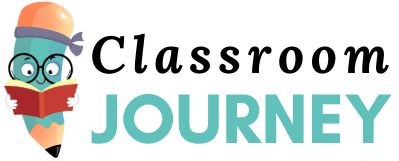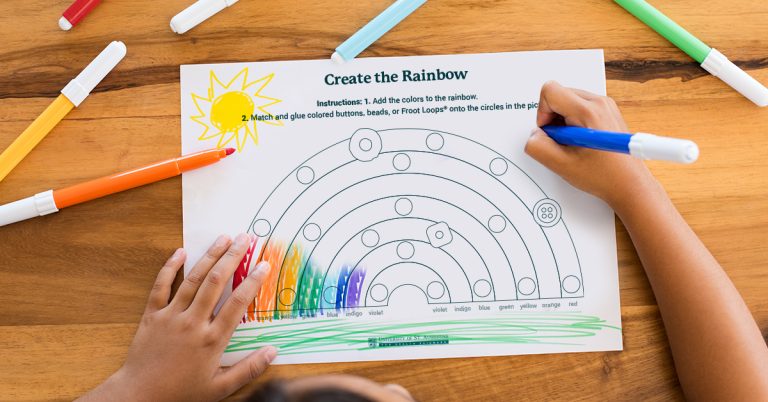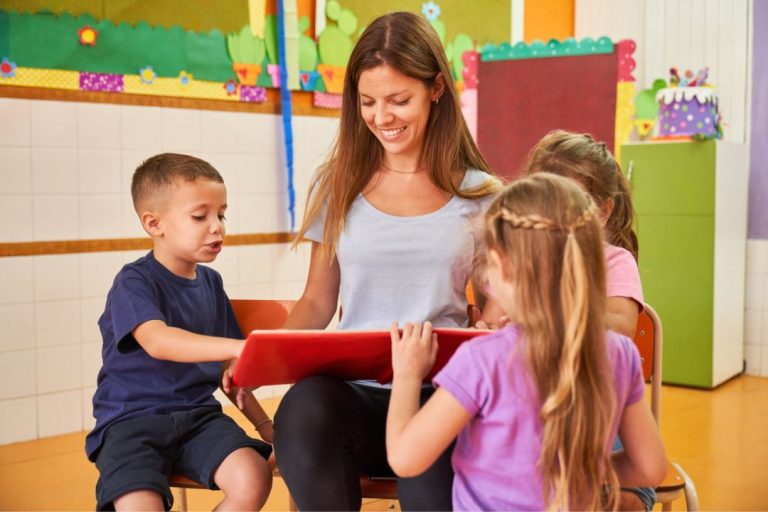What is a Good Dibels Score for Kindergarten? Get the Inside Scoop!

A good DIBELS score for kindergarten is typically above the 50th percentile kindergarten DIBELS scores can provide valuable insight into a child’s literacy skills at the beginning of their academic journey. DIBELS, which stands for Dynamic Indicators of Basic Early Literacy Skills, is a set of standardized assessments used to measure a student’s proficiency in essential reading skills like phonics, fluency, and comprehension.
These scores are often used by educators to identify areas where students may need additional support or intervention. While there is no set benchmark for a “good” DIBELS score, generally speaking, a score above the 50th percentile indicates that a kindergarten student is performing well in comparison to their peers.
However, it’s important to remember that DIBELS scores are just one piece of the puzzle when it comes to assessing a child’s overall literacy development.

Unveiling Good Dibels Scores For Kindergarten
When it comes to assessing a kindergartner’s reading skills, the Dynamic Indicators of Basic Early Literacy Skills (DIBELS) assessment is widely recognized and utilized. The DIBELS assessment provides valuable insights into a child’s literacy development, helping educators identify areas of strength and areas needing improvement. In this article, we will delve into the understanding of the DIBELS assessment framework and pinpoint the benchmarks for kindergarten.
Understanding The Dibels Assessment Framework
The DIBELS assessment framework is designed to measure various areas of early literacy skills, including phonological awareness, alphabetic principle, accuracy, fluency, and comprehension. By evaluating these essential components, the assessment aims to determine a student’s reading proficiency and identify potential areas for growth.
The DIBELS assessment consists of a series of fluency measures, where students are asked to read aloud various passages or solve specific literacy tasks within a specific timeframe. The scores obtained from these measures are then analyzed to assess a student’s reading capabilities.
Pinpointing The Benchmarks For Kindergarten
Kindergarten is a crucial stage in a child’s literacy development, as it sets the foundation for future reading success. Understanding the benchmarks for kindergarten DIBELS scores can shed light on what constitutes a good score. Listed below are the benchmarks for each DIBELS measure in kindergarten:
| DIBELS Measure | Benchmark for Kindergarten |
|---|---|
| Letter Naming Fluency (LNF) | 40 or more correct letter names in one minute |
| Phoneme Segmentation Fluency (PSF) | 20 or more correct phonemes in one minute |
| Nonsense Word Fluency (NWF) | 25 or more correct letter sounds in one minute |
| Oral Reading Fluency (ORF) | 20 or more correct words read in one minute |
| Retell Fluency (RTF) | 2 or more details provided during retelling |
These benchmarks act as a guide for educators and parents to assess a kindergartner’s progress and determine if further interventions or support are necessary. Achieving or exceeding these benchmarks signifies that a child is on the right track to developing the necessary reading skills for future academic success.
By understanding the DIBELS assessment framework and the benchmarks for kindergarten, educators and parents can monitor and support a kindergartner’s reading journey effectively. Regular assessments and targeted interventions can ensure that every child receives the necessary support and guidance to reach their full reading potential.
What Dibels Success Looks Like
In order to understand what a good Dibels score for kindergarten is, it’s important to focus on what Dibels success looks like. Dibels, which stands for Dynamic Indicators of Basic Early Literacy Skills, is a widely used assessment tool to measure reading fluency and early literacy skills in young children. This assessment provides valuable insights into a child’s reading abilities and helps educators identify areas where additional support may be needed.
Criteria For Score Evaluation
When evaluating Dibels scores for kindergarten students, there are several criteria to consider. These criteria help educators determine whether a child is performing at an appropriate level or if they may need additional support to meet grade-level expectations.
The criteria for score evaluation can vary depending on the specific Dibels assessment being administered, but generally, they include:
- Accuracy: The child’s ability to read words correctly.
- Fluency: The child’s speed and accuracy when reading aloud.
- Comprehension: The child’s understanding of what they are reading.
- Vocabulary: The child’s knowledge and use of words in context.
By evaluating these criteria, educators can gain a comprehensive understanding of a student’s reading abilities and pinpoint areas for improvement.
Interpreting Score Tiers: Benchmark, Strategic, Intensive
When looking at Dibels scores for kindergarten students, it’s important to understand the different score tiers and what they mean for a child’s reading proficiency. The scores are typically divided into three categories: benchmark, strategic, and intensive.
| Benchmark | Strategic | Intensive |
|---|---|---|
| Students at or above grade-level expectations. They demonstrate strong foundational literacy skills. | Students who may be slightly below grade-level expectations. They require some additional support to reach proficiency. | Students who are significantly below grade-level expectations. They require intensive intervention to catch up to their peers. |
By interpreting the score tiers, educators can identify students who may need additional support and tailor instructional strategies to meet their unique needs.
Digging Deeper Into Kindergarten Benchmarks
In order to fully understand what constitutes a good Dibels score for kindergarteners, it is essential to dive deeper into the various aspects that contribute to these benchmarks. Digging deeper allows educators, parents, and caregivers to gain a comprehensive understanding of the seasonal assessment periods and scoring variations, as well as the significance of early literacy scores. Let’s explore each of these aspects in detail.
Seasonal Assessment Periods And Scoring Variations
Seasonal assessment periods play a crucial role in evaluating the progress of kindergarteners in their early literacy skills. These assessment periods are typically carried out multiple times throughout the kindergarten year, allowing educators to track growth and identify areas where additional support may be necessary.
During these assessment periods, Dibels scores are calculated using a standardized scoring system that is designed to provide a consistent measure of a child’s early literacy abilities. However, it is important to note that there can be slight variations in the scoring process depending on the specific Dibels measure being used.
For example, the Dibels Next measures may use different scoring rubrics compared to the original Dibels measures. These variations can affect the interpretation of scores and should be taken into account when assessing a child’s performance.
The Significance Of Early Literacy Scores
Early literacy scores obtained through Dibels assessments hold great significance in determining a kindergartener’s reading readiness and future academic success. These scores provide valuable insights into a child’s foundational skills in areas such as phonemic awareness, letter naming fluency, and oral reading fluency.
Research has consistently shown that strong early literacy skills are closely correlated with later reading achievement and overall academic performance. By identifying areas of weakness at an early stage, educators and parents can intervene promptly to provide targeted support and interventions that can greatly improve a child’s literacy development.
Moreover, monitoring Dibels scores over time allows educators to measure the progress of kindergarteners, identify trends, and make informed instructional decisions. By utilizing this data-driven approach, educators can tailor their teaching strategies and interventions to meet the individual needs of students, ensuring optimal learning outcomes for each child.
It is important to note that while Dibels scores provide valuable insights, they are just one piece of the puzzle when it comes to assessing a kindergartener’s overall literacy development. Educators and parents should consider a range of factors, including classroom observations, student work samples, and additional assessments, to gain a comprehensive understanding of each child’s literacy skills.
Inside Scoop: Good Scores Demystified
When it comes to understanding DIBELS scores for kindergarten, it can often feel like unraveling a mysterious code. Parents, teachers, and caregivers are often left wondering what constitutes a “good” DIBELS score and the real-world implications it may have for young learners. In this post, we’ll dive deep into the inside scoop of good scores demystified, exploring the connection between scores and academic performance as well as the real-world implications of DIBELS results for young learners.
Connecting Scores With Academic Performance
Understanding the correlation between DIBELS scores and academic performance is crucial in evaluating a student’s progress. DIBELS measures various skills, including phonemic awareness, phonics, fluency, vocabulary, and comprehension. These skills are fundamental building blocks for early literacy development.
Research has consistently shown that students who achieve higher DIBELS scores in kindergarten tend to perform better academically in the long run. These scores serve as predictors of future reading proficiency, highlighting areas of strengths and weaknesses.
Here’s a quick breakdown of the DIBELS scoring system for kindergarten:
| DIBELS Score | Interpretation |
|---|---|
| On track | Score is within the expected range, indicating age-appropriate skills and readiness for further instruction. |
| Some risk | Score falls slightly below the expected range, indicating the need for targeted support and interventions. |
| At-risk | Score significantly below the expected range, pointing to potential difficulties and the need for intensive interventions. |
While a “good” score may vary depending on the specific benchmark or assessment tool used in your region, aiming for scores that fall within or above the expected range is generally considered positive.
Real-world Implications Of Dibels Results For Young Learners
The DIBELS results go beyond the score itself and have real-world implications for young learners. The data from these assessments can help identify areas of strengths and weaknesses, enabling teachers and parents to tailor instruction to meet individual needs.
For students who score “on track,” it signifies that they have developed the necessary early literacy skills and are well-prepared for further instruction. However, it is essential to continue nurturing and challenging these students to maintain their progress.
Students who receive scores indicating “some risk” or “at-risk” may require targeted interventions to address specific skill gaps. Early identification and intervention can significantly improve a child’s reading abilities and future academic achievements.
It is important to keep in mind that a DIBELS score is just one piece of the puzzle when evaluating a child’s reading proficiency. Building a supportive learning environment, utilizing evidence-based instructional strategies, and fostering a love for reading are also vital factors in promoting overall literacy development.
Enhancing Dibels Outcomes
When it comes to evaluating early literacy skills, the Dynamic Indicators of Basic Early Literacy Skills (DIBELS) assessment is widely used in kindergarten classrooms. It provides valuable insights into a child’s reading abilities, including skills like phonemic awareness, alphabetic principle, and fluency. While every child’s development is unique, it is important for parents and educators to work together to enhance DIBELS outcomes and support children in achieving good scores. In this article, we will discuss effective strategies for parents and educators, as well as interventions and resources that can help improve DIBELS scores.
Strategies For Parents And Educators
Improving DIBELS scores requires a joint effort from both parents and educators. By implementing these strategies, you can create a supportive environment that fosters literacy development:
- Encourage regular reading: Reading aloud to your child regularly can significantly enhance their receptive language skills and expand their vocabulary. Make reading a daily routine by setting aside a specific time for it.
- Promote phonemic awareness: Engage your child in activities that develop phonemic awareness, such as rhyming games or segmenting words into individual sounds. This helps them recognize the building blocks of language and improves their decoding abilities.
- Provide a print-rich environment: Surround your child with books, magazines, and other reading materials. Display labels and posters with words to promote sight word recognition and print awareness.
- Offer writing opportunities: Encourage your child to draw, scribble, and write letters or simple words. This supports their cognitive and fine motor development, helping them develop phonics skills.
- Regular communication with teachers: Stay in touch with your child’s teacher and actively participate in parent-teacher conferences. This communication helps identify areas for improvement and ensures that consistent strategies are used at home and school.
Intervention And Resources For Score Improvement
If your child’s DIBELS scores indicate a need for improvement, there are several interventions and resources available to support their progress. Some effective options include:
- Phonics instruction: Phonics-based programs can help children acquire the necessary skills to decode words and improve reading fluency. These programs focus on letter-sound relationships and word structure, enabling children to apply these skills in their reading.
- One-on-one tutoring: Working with a qualified tutor who specializes in literacy instruction can provide targeted support for your child’s individual needs. They can identify areas of weakness and implement personalized strategies to address them.
- Technology-based resources: Numerous online platforms and educational apps offer interactive activities that engage children in reading and phonics practice. These resources provide a fun and interactive way to reinforce skills outside the classroom.
- Small-group instruction: Collaborative learning environments can be beneficial for students who need additional support. Working alongside peers allows children to practice reading skills in a supportive setting while receiving guidance from an educator.
By employing these interventions and leveraging available resources, parents and educators can improve DIBELS scores and help students develop strong early literacy skills. Remember that every child learns at their own pace, and progress may take time. Consistency, patience, and a nurturing learning environment are key to ensuring positive DIBELS outcomes.

Fostering Excellent Scores In Kindergarten
Kindergarten is a crucial time for young learners as it sets the foundation for their academic success. One important aspect of measuring their progress is through the use of DIBELS (Dynamic Indicators of Basic Early Literacy Skills) scores. These scores provide valuable insights into a child’s reading skills, fluency, and overall literacy development. So, how can teachers foster excellent DIBELS scores in kindergarten? Let’s explore some effective strategies.
Tailored Activities And Teaching Methods
To help kindergarteners achieve excellent DIBELS scores, it is essential to incorporate tailored activities and teaching methods into the classroom. Every child learns differently, so it’s crucial for educators to offer a variety of approaches to cater to diverse learning styles. Here are some effective strategies to consider:
- 1. Multi-sensory activities: Engaging young learners through a variety of senses can enhance their understanding and retention of new concepts. For example, incorporating tactile materials or hands-on manipulatives allows children to explore and interact with the learning material.
- 2. Phonics instruction: Phonics is a fundamental aspect of early literacy development. By teaching students the relationship between letters and sounds, educators can help them decode words and read with greater fluency.
- 3. Sight word practice: Sight words are frequently used words that young children should recognize instantly. By incorporating interactive games, flashcards, and repetitive practice, educators can reinforce sight word recognition.
- 4. Storytelling and reading aloud: A strong foundation in reading comprehension is essential for young learners. Regularly reading aloud to students and encouraging them to engage in storytelling promotes a deeper understanding of narratives and improves overall language skills.
Monitoring Progress And Adapting Teaching Strategies
Continuously monitoring student progress and adapting teaching strategies accordingly is another critical aspect of fostering excellent DIBELS scores in kindergarten. Here are some effective ways to track progress and adjust instructional methods:
- Frequent assessments: Regular assessments allow educators to gauge students’ individual strengths and areas for improvement. By identifying specific learning gaps, teachers can tailor their instruction to address these needs.
- Data-driven instruction: Analyzing DIBELS scores and other relevant data provides insights into student performance trends. Educators can use this information to identify patterns, make informed decisions about instructional strategies, and target interventions for struggling students.
- Flexible grouping: Differentiating instruction by grouping students based on their skill levels allows educators to provide targeted support. Small group instruction or one-on-one sessions can address the specific needs of individual learners, fostering growth and progress.
By implementing these tailored activities, teaching methods, and monitoring strategies, educators can create an environment that fosters excellent DIBELS scores in kindergarten. Remember, every child is unique, and providing personalized instruction is key to their success.
Frequently Asked Questions Of What Is A Good Dibels Score For Kindergarten
How Do You Read Dibels Scores For Kindergarten?
To read DIBELS scores for kindergarten, you assess the various domains, like letters and sounds, phoneme segmentation, and nonsense word fluency. The higher the score, the more proficient the student is in those areas. It helps measure progress and identify areas needing improvement.
What Are The Benchmarks For Dibels?
The benchmarks for DIBELS are reference points used to determine a student’s reading performance. These benchmarks help assess a student’s progress in skills like fluency, accuracy, and comprehension. They provide educators with a standardized framework to identify areas of improvement and provide targeted support to students.
What Is The Range Of Dibels?
DIBELS has a range that measures early literacy skills in students from kindergarten to sixth grade. It assesses areas like phonemic awareness, phonics, fluency, vocabulary, and comprehension. The assessment helps educators identify students who may need additional support in reading and provides valuable data for instructional planning.
What Is A Blue Score On Dibels?
A blue score on DIBELS indicates that a student is making adequate progress in their reading skills. It signifies that the student is meeting the expected level of achievement.
Conclusion
Based on the information provided, a good Dibels score for kindergarten can serve as an effective indicator of a child’s early literacy skills and progress. It is crucial to remember that Dibels scores are just one piece of the puzzle and should be interpreted in conjunction with other assessments and observations.
By understanding the benchmarks and using the data to inform instructional decisions, educators and parents can support young learners in reaching their full potential in reading and language development.

Emma combines her teaching experience with her writing skills to produce engaging and informative content. She covers a range of topics, from classroom management to innovative teaching techniques.






